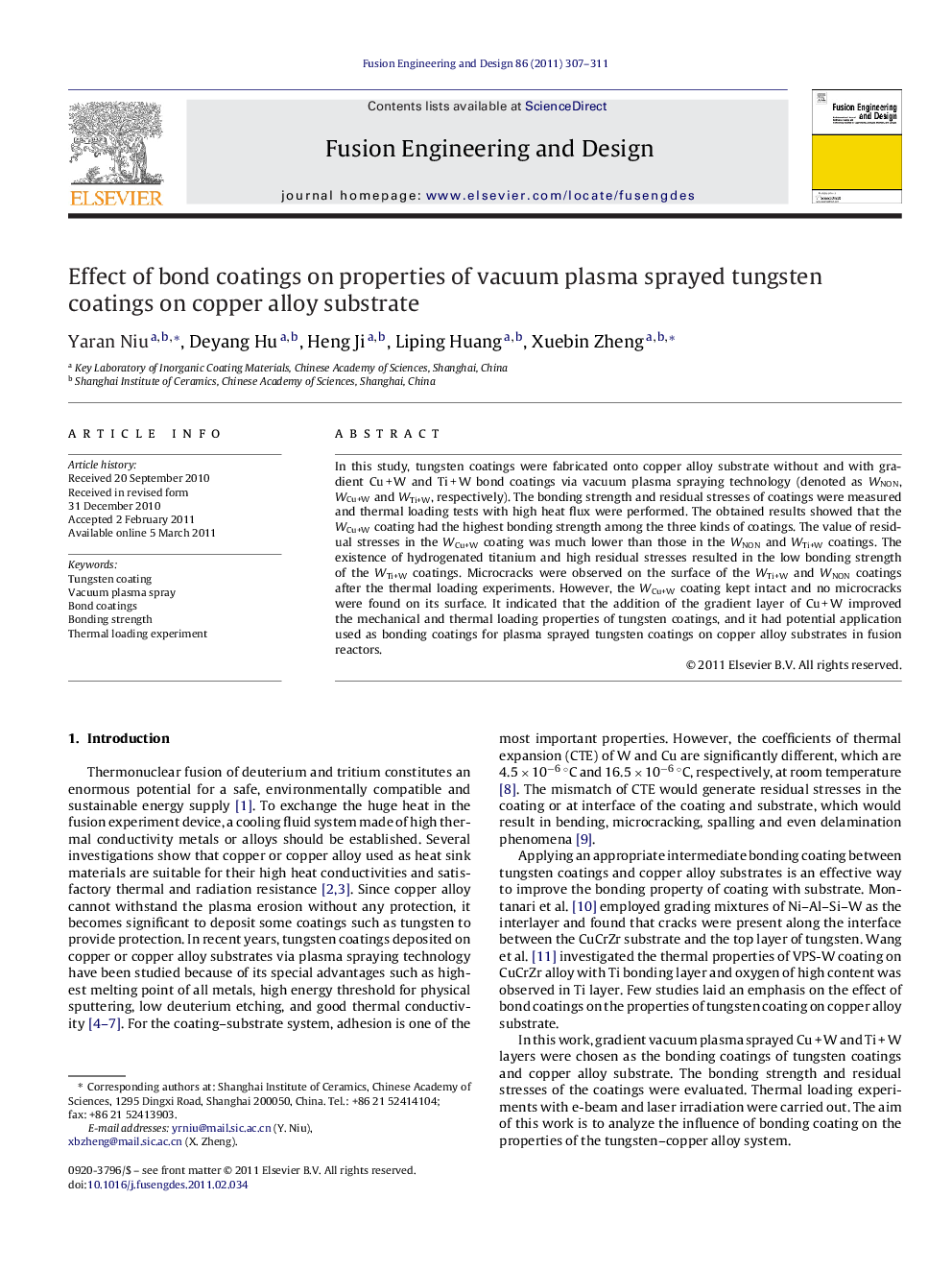| Article ID | Journal | Published Year | Pages | File Type |
|---|---|---|---|---|
| 272126 | Fusion Engineering and Design | 2011 | 5 Pages |
In this study, tungsten coatings were fabricated onto copper alloy substrate without and with gradient Cu + W and Ti + W bond coatings via vacuum plasma spraying technology (denoted as WNON, WCu+W and WTi+W, respectively). The bonding strength and residual stresses of coatings were measured and thermal loading tests with high heat flux were performed. The obtained results showed that the WCu+W coating had the highest bonding strength among the three kinds of coatings. The value of residual stresses in the WCu+W coating was much lower than those in the WNON and WTi+W coatings. The existence of hydrogenated titanium and high residual stresses resulted in the low bonding strength of the WTi+W coatings. Microcracks were observed on the surface of the WTi+W and WNON coatings after the thermal loading experiments. However, the WCu+W coating kept intact and no microcracks were found on its surface. It indicated that the addition of the gradient layer of Cu + W improved the mechanical and thermal loading properties of tungsten coatings, and it had potential application used as bonding coatings for plasma sprayed tungsten coatings on copper alloy substrates in fusion reactors.
Research highlights► Tungsten coatings were fabricated onto copper alloy substrate with gradient Cu + W and Ti + W bond coatings via vacuum plasma spraying technology. ► The bonding strength, residual stresses and thermal loading properties of the coatings were analyzed and compared. ► The gradient layer of Cu + W improved the mechanical and thermal loading properties of tungsten coatings, having a promising prospect as bonding coatings for plasma sprayed tungsten coatings on copper alloy substrates in fusion reactors.
